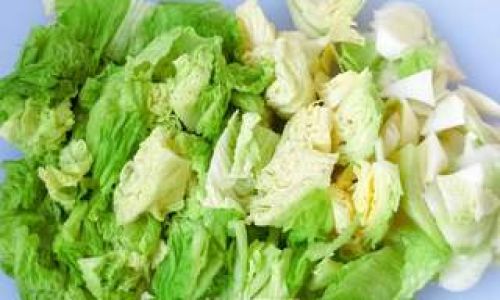Table of content
Crayfish, often dubbed the “king of summer night markets,” has transcended its humble origins to become a global culinary sensation. While restaurant versions dazzle with complex flavors, the heart of this dish lies in its accessibility for home cooks. This article demystifies the process of creating stir-fried crayfish (爆炒小龙虾) in your own kitchen, blending tradition with modern techniques to achieve a balance of spicy, aromatic, and umami-rich flavors. Whether you’re a seasoned home chef or a curious novice, this guide will equip you with the knowledge to craft a meal that rivals any street-side stall.
The Allure of Stir-Fried Crayfish
Crayfish, also known as crawfish or crawdads, are freshwater crustaceans celebrated for their sweet, tender meat and versatility in cooking. In Chinese cuisine, they are most famously prepared in a fiery stir-fry, a dish that marries bold spices with the natural brininess of the shellfish. The dish’s popularity stems from its ability to evoke nostalgia—think bustling night markets where diners gather around plastic stools, gloves stained with sauce, and mountains of empty shells piling up. Replicating this experience at home allows for customization, from adjusting spice levels to incorporating local ingredients, while maintaining the dish’s rustic charm.
Understanding the Ingredients
The foundation of great stir-fried crayfish lies in selecting quality ingredients. While freshness is paramount, the magic truly happens in the sauce, a symphony of fermented bean paste, chili, garlic, and aromatic herbs.

Key Components
- Crayfish (2 lbs): Opt for live specimens if possible, as they ensure the freshest flavor. If unavailable, frozen crayfish tails can substitute, though the texture may differ.
- Aromatics: Garlic (1 head), ginger (3-inch piece), and scallions (1 bunch) form the flavor base.
- Spices: Dried chili peppers (10–15, depending on heat preference), Sichuan peppercorns (1 tbsp), and star anise (2 pieces) add complexity.
- Sauce Base: Fermented black bean paste (2 tbsp), doubanjiang (spicy chili bean paste, 3 tbsp), soy sauce (2 tbsp), and oyster sauce (1 tbsp) create depth.
- Liquid Elements: Beer (1 cup) or chicken stock deglazes the pan, while a splash of rice vinegar (1 tbsp) brightens the dish.
- Finishing Touches: Fresh cilantro (1/2 cup), sesame oil (1 tsp), and a handful of dried chili flakes for garnish.
Preparation: The Devil is in the Details
Cleaning crayfish is a ritual that demands patience. Begin by rinsing them under cold water to remove surface debris. For live crayfish, a quick blanch in boiling water (30 seconds) stuns them, making handling safer. Alternatively, use kitchen shears to snip off the head just behind the eyes, then twist and pull to remove the intestinal tract. Some prefer to keep the heads intact for extra flavor, but this increases cooking time.
For frozen tails, thaw them thoroughly and pat dry to prevent excess moisture during cooking. Marinate the crayfish in a mixture of soy sauce, rice wine, and cornstarch for 15 minutes to tenderize the meat.
The Cooking Process: Step-by-Step Mastery
Aromatic Infusion
Heat a wok over high heat until smoking. Add 1/4 cup of vegetable oil, then toss in the Sichuan peppercorns and star anise. Stir-fry for 30 seconds until fragrant, then add minced garlic, ginger, and dried chilies. The goal here is to toast the spices without burning them—a delicate dance that releases their essential oils.

Building the Sauce
Lower the heat to medium and stir in the doubanjiang and fermented black bean paste. Cook for 2–3 minutes until the oil separates and turns a deep red. This step is critical; it caramelizes the sugars in the paste, developing a rich, almost meaty flavor.
Introducing the Crayfish
Increase the heat to high and add the crayfish. Toss vigorously to coat each piece in the sauce. The high heat sears the shells, locking in moisture and creating a smoky char. Pour in the beer or stock, then cover and simmer for 5–7 minutes. This allows the flavors to penetrate the meat while reducing the liquid to a glossy glaze.
Finishing Touches
Uncover the wok and add the scallions, cilantro, and a splash of rice vinegar. Toss once more, then drizzle with sesame oil. The vinegar cuts through the richness, while the sesame oil adds a nutty aroma. Serve immediately, preferably with the shells slightly cracked for easy eating.

Pro Tips for Perfect Results
- Spice Management: For less heat, remove the seeds from dried chilies before cooking. Conversely, add fresh bird’s-eye chilies for an extra kick.
- Texture Control: Overcooking crayfish results in rubbery meat. Pull them from the heat when the shells turn bright red and the tails curl slightly.
- Sauce Consistency: If the sauce is too thin, remove the crayfish and reduce it further before recombining. For a thicker consistency, mix 1 tsp of cornstarch with 2 tbsp water and stir in during the final minutes.
Pairing Suggestions
Stir-fried crayfish pairs wonderfully with cold beer or a crisp lager, which cleanse the palate between spicy bites. For non-alcoholic options, try iced jasmine tea or lemonade. On the table, serve with steamed buns to soak up the sauce, or pair with crunchy vegetables like cucumber sticks or blanched bok choy for texture contrast.
Health Considerations
While crayfish is a lean protein source rich in vitamin B12 and selenium, the dish’s spicy, oily nature means moderation is key. Opt for leaner cuts of meat if preparing a large batch, and balance the meal with a side of stir-fried greens.
Cultural Significance
In China, crayfish stir-fries are more than just food—they’re social rituals. The act of peeling shells and sucking sauce fosters camaraderie, turning meals into communal experiences. By mastering this dish, you’re not just cooking; you’re participating in a tradition that spans continents and generations.

Conclusion
Creating stir-fried crayfish at home is a labor of love, but the rewards are immense. Each bite offers a symphony of textures and flavors, a testament to the cook’s patience and skill. Whether you’re hosting a backyard barbecue or craving a taste of summer nostalgia, this recipe ensures that the spirit of the night market lives on in your kitchen. So don your apron, gather your ingredients, and let the sizzle of the wok transport you to a world where fire, spice, and friendship collide.





0 comments